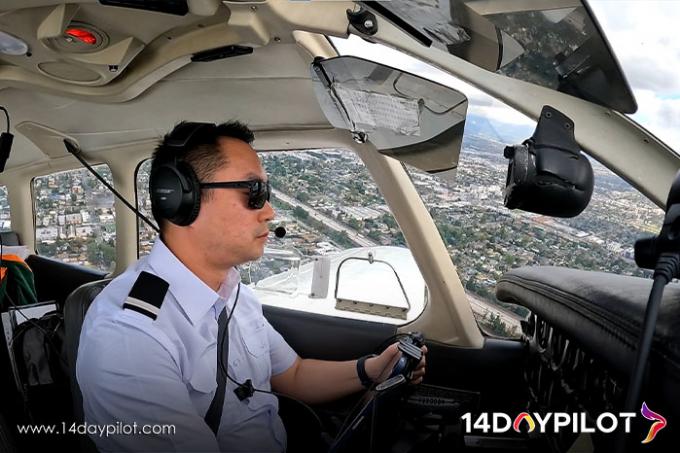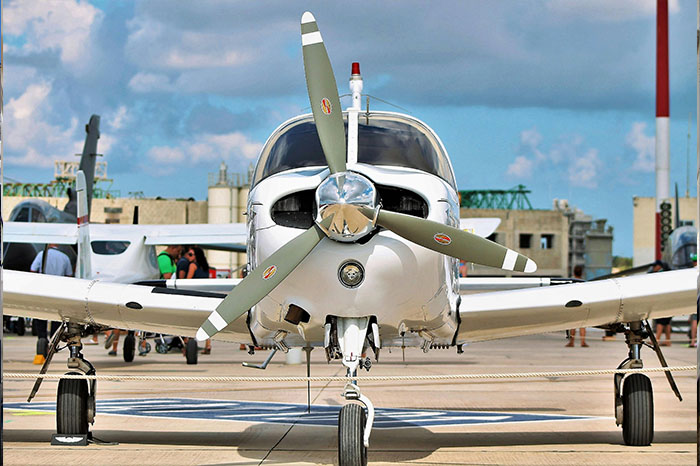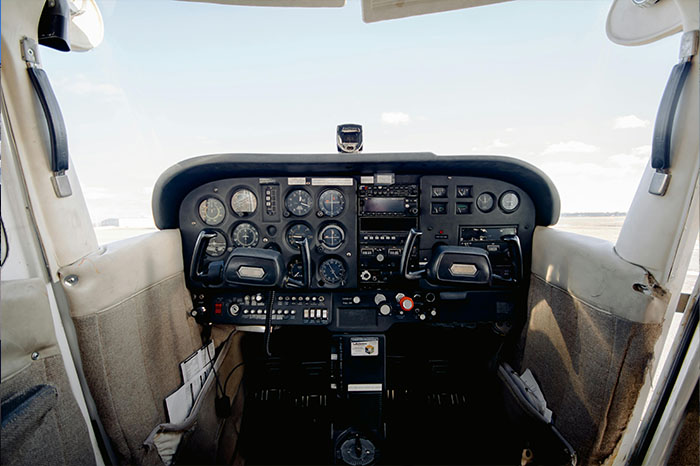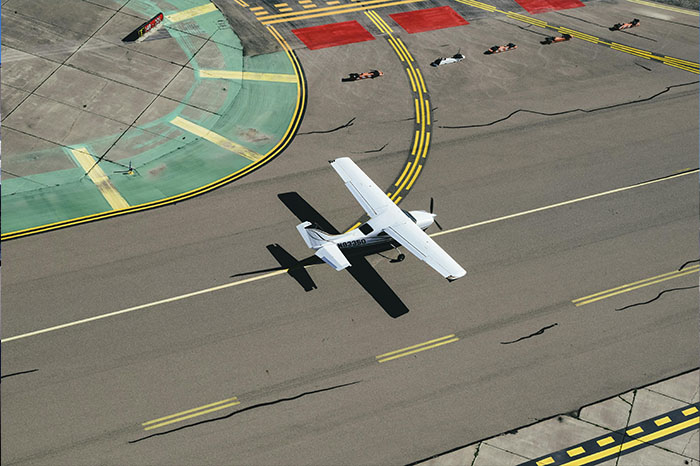
This guide will take you through the process of landing an airplane, specifically tailored for the Accelerated Flight Training Private Pilot 14 Days program at 14DAYPILOT Flight School. By the end, you’ll understand the key landing techniques, common pitfalls, and helpful tips for mastering your landings in a casual, easy to understand way.
A great landing starts with a great approach. This phase is all about stabilizing the airplane so you’re in the best possible position to land.
What Makes a Stable Approach?
Correct Airspeed: Flying too fast or too slow can lead to unstable landings. Use your aircraft’s POH (Pilot’s Operating Handbook) to know the recommended approach speed typically 65-70 knots in a Cessna 172.
Proper Descent Rate: Aim for a consistent descent rate, often around 500 feet per minute. Adjust power and pitch to maintain it.
Aligned with the Runway Centerline: Keep the nose of the airplane pointed down the centerline using coordinated aileron and rudder inputs.
Read More: How to Choose the Best Ground School for Your FAA Checkride
Pro Tip: Use Your Checkpoints
In your Accelerated Flight Training Private Pilot 14 DAYS program, you’ll learn to identify visual and instrument checkpoints during the approach:
Downwind leg: Reduce power and begin a slow descent.
Base leg: Turn toward the runway, managing speed and alignment.
Final approach: Align with the centerline, stabilize the airplane, and prepare for the flare.

Always Be Ahead Of The Airplane When Flying (Source Image: Pexels/Joe Ambrogio)
Landing is all about managing energy. Too much speed or altitude can ruin an otherwise perfect approach. Some things to note:
Throttle controls altitude. Adding power will flatten your descent; reducing power will steepen it.
Pitch controls speed. Lowering the nose increases speed; raising it decreases speed.
Mastering this balance ensures you reach the runway at the right speed and angle. Practice adjusting one while maintaining the other, this is a skill that will make or break your landings.
Many runways are equipped with VASI or PAPI lights, which guide your descent:
Two white and two red (For PAPI): You are on the glide path.
White over red (For VASI): You’re on the glide path.
All white: Too high; reduce power.
All red: Too low; add power immediately.

When The Approach Is Unstable, Go Around (Source Image: Pexels/Harrison Haines)
The flare is where the magic happens. This is the moment you transition from descending to flying parallel to the runway, just before touchdown.
Start Just Above the Runway: At about 10-20 feet off the ground, begin pulling back on the yoke or stick to level off.
Hold It Off: Keep pulling back gradually to keep the airplane flying as long as possible, letting the speed bleed off naturally.
Touchdown Gently: The airplane should settle onto the runway on its main wheels first. The nose wheel should touch down gently afterward.
Pro Tip: Practice Spot Landings
During your training at 14DAYPILOT Flight School, you’ll practice landing on specific points on the runway. This builds precision and confidence.
Not all landings will be straight down the runway with no wind. Crosswind landings are a critical skill you’ll practice as you prepare for your solo.
The Two Techniques:
Crab Method: Point the nose of the airplane into the wind during the approach to counteract drift. Straighten out just before touchdown.
Wing Low Method: Bank the airplane slightly into the wind while using opposite rudder to keep the nose aligned with the runway.
Both techniques are valid; the best one depends on your airplane and conditions. Your instructor will help you decide which to use during your Accelerated Flight Training Private Pilot 14 DAYS program.
Landing mistakes are part of learning, but knowing what to watch for can help you avoid them.
Problem: Starting the flare too high results in a hard landing or floating too long.
Solution: Focus on judging height better; use visual cues like the runway width.
Problem: Pulling back too aggressively in the flare, causing the airplane to climb.
Solution: Relax pressure on the yoke and let the airplane settle naturally.
Problem: Failing to maintain alignment with the runway.
Solution: Keep small corrections with rudder and ailerons, and focus on the centerline throughout.
Read More: Stress Management for Pilots: Handle Pressure with Confidence

Remember To Always Move On The Centerline (Source Image: Pexels/Tim Gouw)
Practice in calm winds first, then gradually introduce crosswinds and gusty conditions.
Fly with your instructor but take on all the responsibilities as if you’re alone.
Use a camera or ask your instructor to observe and debrief after each flight. Analyzing your landings will help you spot areas for improvement.
At 14DAYPILOT Flight School, our Accelerated Flight Training Private Pilot 14 DAYS program is designed to help you build confidence and proficiency quickly. Our experienced instructors focus on landings from day one, ensuring you’re ready to solo safely and successfully in record time.
What Sets Us Apart:
Focused Training: Intensive one-on-one sessions.
State of the Art Facilities: Simulators and aircraft equipped with modern avionics.
Proven Curriculum: Tailored to accelerate your learning curve.
Landing an airplane is a skill that takes time and practice, but with the right mindset and guidance, you’ll master it in no time. By focusing on the approach, managing your energy, perfecting the flare, and handling crosswinds, you’ll be well prepared for your solo flight.
Ready to take the leap? Join the 14DAYPILOT Flight School and experience the best in Accelerated Flight Training Private Pilot 14 Days Programs. Your solo flight and the skies are waiting for you!

Landing an airplane is one of the most challenging and rewarding skills you’ll master during your solo flight training. It’s where everything comes together: control, judgment, and precision. Preparing for your solo flight means perfecting your landings, and it’s not as daunting as it seems when broken into manageable steps.
This guide will take you through the process of landing an airplane, specifically tailored for the Accelerated Flight Training Private Pilot 14 Days program at 14DAYPILOT Flight School. By the end, you’ll understand the key landing techniques, common pitfalls, and helpful tips for mastering your landings in a casual, easy to understand way.
A great landing starts with a great approach. This phase is all about stabilizing the airplane so you’re in the best possible position to land.
What Makes a Stable Approach?
Correct Airspeed: Flying too fast or too slow can lead to unstable landings. Use your aircraft’s POH (Pilot’s Operating Handbook) to know the recommended approach speed typically 65-70 knots in a Cessna 172.
Proper Descent Rate: Aim for a consistent descent rate, often around 500 feet per minute. Adjust power and pitch to maintain it.
Aligned with the Runway Centerline: Keep the nose of the airplane pointed down the centerline using coordinated aileron and rudder inputs.
Read More: How to Choose the Best Ground School for Your FAA Checkride
Pro Tip: Use Your Checkpoints
In your Accelerated Flight Training Private Pilot 14 DAYS program, you’ll learn to identify visual and instrument checkpoints during the approach:
Downwind leg: Reduce power and begin a slow descent.
Base leg: Turn toward the runway, managing speed and alignment.
Final approach: Align with the centerline, stabilize the airplane, and prepare for the flare.

Always Be Ahead Of The Airplane When Flying (Source Image: Pexels/Joe Ambrogio)
Landing is all about managing energy. Too much speed or altitude can ruin an otherwise perfect approach. Some things to note:
Throttle controls altitude. Adding power will flatten your descent; reducing power will steepen it.
Pitch controls speed. Lowering the nose increases speed; raising it decreases speed.
Mastering this balance ensures you reach the runway at the right speed and angle. Practice adjusting one while maintaining the other, this is a skill that will make or break your landings.
Many runways are equipped with VASI or PAPI lights, which guide your descent:
Two white and two red (For PAPI): You are on the glide path.
White over red (For VASI): You’re on the glide path.
All white: Too high; reduce power.
All red: Too low; add power immediately.

When The Approach Is Unstable, Go Around (Source Image: Pexels/Harrison Haines)
The flare is where the magic happens. This is the moment you transition from descending to flying parallel to the runway, just before touchdown.
Start Just Above the Runway: At about 10-20 feet off the ground, begin pulling back on the yoke or stick to level off.
Hold It Off: Keep pulling back gradually to keep the airplane flying as long as possible, letting the speed bleed off naturally.
Touchdown Gently: The airplane should settle onto the runway on its main wheels first. The nose wheel should touch down gently afterward.
Pro Tip: Practice Spot Landings
During your training at 14DAYPILOT Flight School, you’ll practice landing on specific points on the runway. This builds precision and confidence.
Not all landings will be straight down the runway with no wind. Crosswind landings are a critical skill you’ll practice as you prepare for your solo.
The Two Techniques:
Crab Method: Point the nose of the airplane into the wind during the approach to counteract drift. Straighten out just before touchdown.
Wing Low Method: Bank the airplane slightly into the wind while using opposite rudder to keep the nose aligned with the runway.
Both techniques are valid; the best one depends on your airplane and conditions. Your instructor will help you decide which to use during your Accelerated Flight Training Private Pilot 14 DAYS program.
Landing mistakes are part of learning, but knowing what to watch for can help you avoid them.
Problem: Starting the flare too high results in a hard landing or floating too long.
Solution: Focus on judging height better; use visual cues like the runway width.
Problem: Pulling back too aggressively in the flare, causing the airplane to climb.
Solution: Relax pressure on the yoke and let the airplane settle naturally.
Problem: Failing to maintain alignment with the runway.
Solution: Keep small corrections with rudder and ailerons, and focus on the centerline throughout.
Read More: Stress Management for Pilots: Handle Pressure with Confidence

Remember To Always Move On The Centerline (Source Image: Pexels/Tim Gouw)
Practice in calm winds first, then gradually introduce crosswinds and gusty conditions.
Fly with your instructor but take on all the responsibilities as if you’re alone.
Use a camera or ask your instructor to observe and debrief after each flight. Analyzing your landings will help you spot areas for improvement.
At 14DAYPILOT Flight School, our Accelerated Flight Training Private Pilot 14 DAYS program is designed to help you build confidence and proficiency quickly. Our experienced instructors focus on landings from day one, ensuring you’re ready to solo safely and successfully in record time.
What Sets Us Apart:
Focused Training: Intensive one-on-one sessions.
State of the Art Facilities: Simulators and aircraft equipped with modern avionics.
Proven Curriculum: Tailored to accelerate your learning curve.
Landing an airplane is a skill that takes time and practice, but with the right mindset and guidance, you’ll master it in no time. By focusing on the approach, managing your energy, perfecting the flare, and handling crosswinds, you’ll be well prepared for your solo flight.
Ready to take the leap? Join the 14DAYPILOT Flight School and experience the best in Accelerated Flight Training Private Pilot 14 Days Programs. Your solo flight and the skies are waiting for you!
Dr.Gema Goeyardi as a Gold Seal flight instructor will help you to achieve your dream as a pilot in a fast track accelerated program. His secret recipe of accelerated flight training syllabus has proven to graduate pilots from Private Pilot to ATP world wide in just very short days. As an ATP and Boeing 737 captain he always set a high standard of training and encouraged all students to have a professional pilot qualification standard. Lets talk with Dr.Gema for your training program plan, schedule your check ride, and customize your flexible training journey.
Dr.Gema Goeyardi as a Gold Seal flight instructor will help you to achieve your dream as a pilot in a fast track accelerated program. His secret recipe of accelerated flight training syllabus has proven to graduate pilots from Private Pilot to ATP world wide in just very short days. As an ATP and Boeing 737 captain he always set a high standard of training and encouraged all students to have a professional pilot qualification standard. Lets talk with Dr.Gema for your training program plan, schedule your check ride, and customize your flexible training journey.